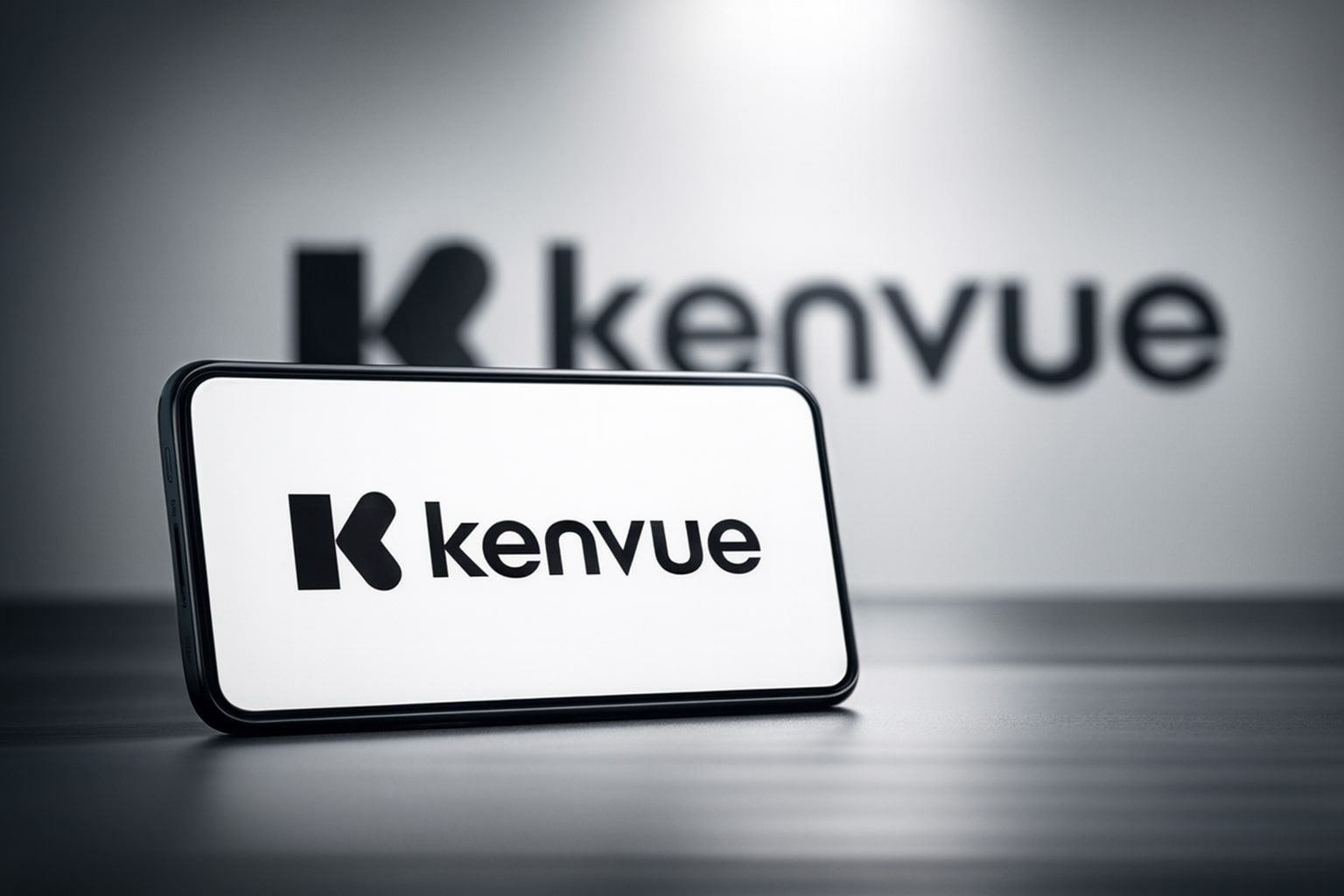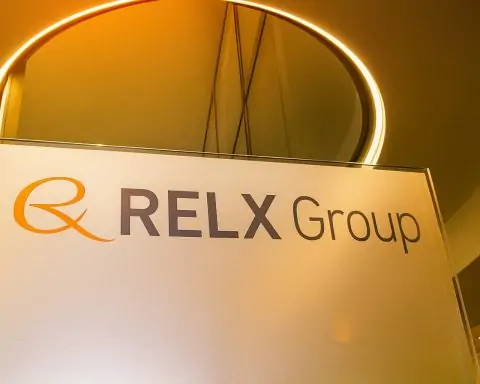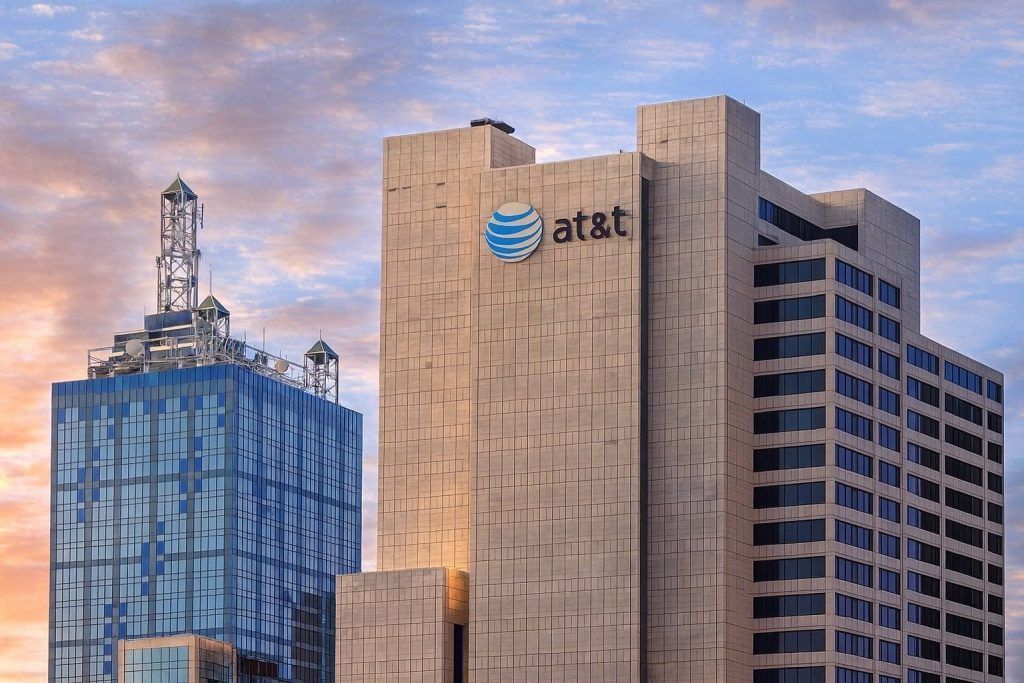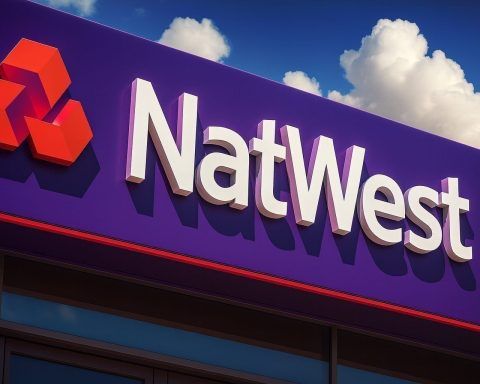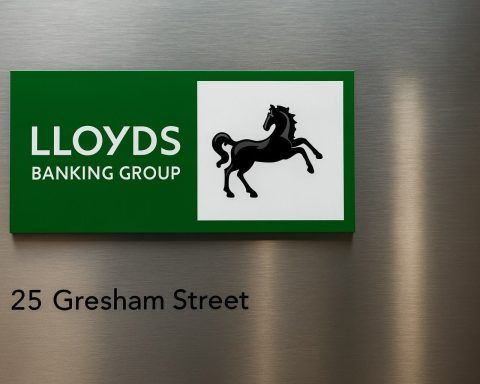Published: November 22, 2025 — Information only, not investment advice.
KVUE stock price today: trading below deal value but off the lows
Kenvue Inc. (NYSE: KVUE) — the consumer health company behind Tylenol, Band‑Aid, Neutrogena and Listerine — is back in focus this weekend after another strong session on Friday.
As of the most recent quote in late Friday trading (00:15 UTC on Saturday, November 22), KVUE last changed hands around $16.64, up roughly 3% on the day, with heavy volume of about 47 million shares.
That move comes on top of a roughly 17% jump earlier this month when Kimberly‑Clark (NYSE: KMB) announced a cash‑and‑stock deal to buy Kenvue, sending the stock sharply higher from its October lows. [1]
Despite the rebound, KVUE still trades meaningfully below the value implied by the takeover terms, so the stock is being treated less like a typical consumer‑staples name and more like a live merger‑arbitrage situation.
The Kimberly‑Clark deal: how much is KVUE “worth” under the offer?
On November 3, Kimberly‑Clark unveiled a plan to acquire Kenvue in a deal valued at roughly $48–49 billion, combining Kleenex, Huggies and Cottonelle with Kenvue’s OTC medicines and personal‑care brands. [2]
Under the definitive agreement:
- Kenvue shareholders are set to receive
$3.50 in cash + 0.14625 shares of KMB for each share of KVUE. [3] - Based on Kimberly‑Clark’s closing price of $119.71 on October 31, 2025, that package was valued at $21.01 per KVUE share, a roughly 46% premium to Kenvue’s pre‑deal price. [4]
Because part of the consideration is stock, the effective deal value moves with KMB:
- Kimberly‑Clark currently trades around $105.18.
- At that level, the offer equates to roughly $18.9 per KVUE share (0.14625 × 105.18 + 3.50).
- With KVUE at about $16.64, the stock trades at roughly a 12% discount to that implied value — a typical merger spread that reflects regulatory, legal and deal‑execution risks.
The transaction has been unanimously approved by both boards and is expected to close in the second half of 2026, subject to shareholder approvals and regulatory sign‑off in multiple jurisdictions. [5]
For KVUE holders, that means:
- Upside is now linked to the deal, not just fundamentals.
- Downside risk includes any material delay, renegotiation, regulatory block or outright failure of the merger.
- The true eventual payout depends on where KMB trades at closing, not the October 31 reference price.
Speculation of a rival bidder adds fuel to the move
Friday’s pop wasn’t just about the existing deal math. According to a merger‑news roundup on Seeking Alpha, KVUE rose about 3% this week amid market chatter about a possible rival bidder emerging for Kenvue after the Kimberly‑Clark agreement was announced. [6]
Separate coverage of Kenvue’s “unexpected surge” notes that:
- KVUE jumped roughly 17–18% when the acquisition news first broke.
- Jefferies described the purchase price as attractive, but suggested it could potentially be revised higher if competing bids appeared. [7]
So far no formal higher offer has surfaced, but the possibility is enough to keep speculative interest high and to support the stock above pre‑deal levels.
Earnings check: slower sales, but Q3 2025 beat on EPS
Behind the M&A headlines, Kenvue is still running its standalone business — and the latest numbers matter both to arbitrage traders and long‑term investors who might end up owning Kimberly‑Clark stock.
In Q3 2025, Kenvue reported: [8]
- Net sales: down 3.5% year‑over‑year, with organic sales down about 4.4%.
- Diluted EPS (GAAP):$0.21, up slightly from $0.20 a year earlier.
- Adjusted diluted EPS:$0.28, flat versus the prior‑year quarter and a penny above Wall Street expectations (consensus ~ $0.27).
- Gross margin: expanded by about 50–60 basis points, helped by productivity gains and supply‑chain optimization, partly offsetting inflation and lower volume.
For the full year 2025, management is guiding to: [9]
- Net and organic sales: down low single digits (a cut from earlier expectations of 1–3% growth).
- Adjusted operating margin: down year‑over‑year.
- Adjusted EPS:$1.00–$1.05, below the earlier Street consensus of about $1.13.
Analysts have described Kenvue as a “show‑me story” that needs to deliver consistent improvements before the stock can win a higher standalone valuation, especially given margin headwinds and softer consumer demand in categories like skin health and beauty. [10]
In other words, fundamentals are solid but not spectacular, and the takeover has arguably rescued the stock from what could have been a longer “prove it” phase after its 2023 spin‑off from Johnson & Johnson.
Dividend story: nearly 5% yield and a $398 million payout cleared by the courts
Dividend‑oriented investors are also watching KVUE closely.
According to recent market data, Kenvue currently carries a forward annual dividend of about $0.83 per share, implying a yield of roughly 5% at current prices, with an ex‑dividend date on November 12, 2025, and a 12‑month consensus target price around $19.3. [11]
That payout profile is front and center in a high‑profile legal battle:
- The Texas Attorney General sued Kenvue on October 28, 2025, alleging it concealed supposed risks of using Tylenol during pregnancy and asking a court to block a planned dividend to preserve cash for potential claims.
- On November 14, a Texas judge ruled that she did not have jurisdiction to block Kenvue’s roughly $398 million dividend scheduled for November 26, allowing the company to proceed. [12]
- The judge also declined to order Kenvue to change Tylenol marketing, and the article notes that major medical societies dispute claims of a proven link between Tylenol use in pregnancy and autism, even as U.S. regulators review the evidence. [13]
For KVUE shareholders, the ruling removes an immediate overhang on near‑term cash returns, but the underlying Tylenol litigation and public‑health debate remain a key long‑term risk that both Kenvue and Kimberly‑Clark will need to manage.
Wall Street view: price targets, valuation and “Hold” sentiment
On the analyst side, sentiment on KVUE is cautiously constructive but far from euphoric:
- In late October, Jefferies set a $23 price target on KVUE, implying more than 50% upside from around $15 at the time and signaling confidence in Kenvue’s long‑term consumer‑health franchise. [14]
- Consensus data from market sources puts the average 12‑month price target near $19–20 per share, modestly above both the current trading price and the deal’s current implied value based on today’s KMB price. [15]
- A MarketBeat roundup notes a consensus “Hold” rating after several brokers trimmed targets following the guidance cut, even as the company executed a small EPS beat in Q3. [16]
On valuation:
- One recent analysis points to a trailing P/E near 21, an enterprise value around $31–32 billion, gross margin about 58%, a debt‑to‑equity ratio of roughly 0.8, and return on equity near 10–11% — respectable numbers for a defensive consumer‑health name, though not without leverage and growth concerns. [17]
These metrics help explain why a larger strategic buyer like Kimberly‑Clark is willing to pay a premium, while standalone public‑market investors were more hesitant when KVUE traded in the mid‑teens.
Big money moves: institutions shuffle positions in KVUE
Institutional investors are actively repositioning around the deal and Kenvue’s changing risk profile:
- Willis Investment Counsel increased its KVUE stake by about 9% to roughly 968,000 shares (around $20.3 million), and other institutions have also adjusted positions, pushing institutional ownership to around 97–98% of the float. [18]
- AXQ Capital LP boosted its holding by about 419% in the second quarter, to roughly 55,900 shares, signalling increased conviction or a merger‑arbitrage trade. [19]
- On the other side, Creative Planning cut its KVUE position by about 40%, selling more than 150,000 shares during the same period. [20]
Taken together, the data suggest active rotation rather than a one‑sided stampede. Some managers see value in the spread between the trading price and the deal terms; others are taking profits or reducing exposure to litigation and integration risk.
Sentiment check: Cramer’s comments and class‑action scrutiny
Media coverage adds another layer to KVUE’s story:
- On CNBC’s Mad Money, Jim Cramer told a caller that he thinks Kenvue’s situation is “a good one, not a bad one”, acknowledging that lawsuits are likely but pointing to Johnson & Johnson’s long history of navigating similar issues. He also said he doesn’t view the litigation risk as severe as the market once feared, though he previously cautioned he didn’t expect “a lot of upside” before the takeover news. [21]
- At least one specialist law firm, Rowley Law PLLC, has announced an investigation into potential securities‑law breaches connected to the Kimberly‑Clark deal, while Monteverde & Associates PC is also publicly investigating the merger’s fairness to KVUE shareholders. [22]
Such investigations are common in large M&A transactions and do not necessarily imply wrongdoing, but they can affect timeline, perceived risk and — occasionally — deal terms.
KVUE stock scenarios: how investors are thinking about it
With all of these moving parts, KVUE now trades less like a classic defensive dividend stock and more like a three‑way bet:
- Base case – deal closes as planned
- KVUE shareholders ultimately receive the cash‑and‑stock package and become owners of the combined Kimberly‑Clark/Kenvue entity sometime in 2H 2026. [23]
- Returns from here largely reflect the deal spread (currently ~12% gross based on today’s KMB price) plus interim dividends, minus any time value and risk of slippage.
- Upside case – competing bid or improved terms
- The speculation highlighted by Seeking Alpha and others centers on the possibility that another bidder might emerge, or that Kimberly‑Clark might sweeten its offer if challenged. [24]
- There is no guarantee of a higher bid, but this optionality can support the share price above where it might trade on fundamentals alone.
- Downside case – deal fails or is delayed significantly
- If regulators, courts, shareholders or the companies themselves walk away, KVUE could revert to trading on its own earnings, guidance cuts, Tylenol litigation overhang and broader consumer‑spending trends. [25]
- In that scenario, the prior dip into the mid‑teens — before the takeover premium and before renewed legal scrutiny — becomes an important reference point for investors.
Because of these intertwined paths, professional investors often treat KVUE as a risk‑reward spread trade rather than a straightforward long‑term “buy and hold” story at this stage.
Key things to watch next for KVUE stock
For readers tracking KVUE in the coming weeks and months, several catalysts stand out:
- Regulatory reviews and merger filings
- Watch for updates as Kimberly‑Clark and Kenvue file documentation with the SEC and global competition authorities regarding the combination. [26]
- Shareholder votes
- Both KMB and KVUE shareholders will eventually need to approve the transaction via a joint proxy statement/prospectus.
- Tylenol litigation developments
- Additional rulings, potential label‑change decisions by the FDA, or new scientific guidance could all influence the perceived risk profile. [27]
- Dividend payments and policy
- The November 26 dividend and any future updates to payout policy will matter for income‑oriented holders, especially given the near‑5% yield. [28]
- Next earnings report
- KVUE’s next scheduled earnings (currently expected around early February 2026) will show whether management is making progress on stabilizing sales and margins while the deal moves through approvals. [29]
Bottom line
KVUE stock today sits at the intersection of defensive consumer health, high‑stakes M&A and headline‑driven litigation risk:
- The Kimberly‑Clark offer provides a clear framework for value, but the actual outcome depends on regulators, courts, shareholder votes and KMB’s future share price.
- Fundamental performance is steady but pressured, with modest EPS growth, declining 2025 sales guidance, and margin squeeze weighing on the standalone story. [30]
- A near‑5% forward dividend yield, improving margins and strong brands support the long‑term case, while Tylenol lawsuits and integration risk temper enthusiasm. [31]
For now, KVUE trades like a live merger play with a defensive backbone. Traders are focused on the spread and deal odds, while longer‑term investors are weighing whether the combined Kimberly‑Clark–Kenvue platform will ultimately justify today’s takeover valuation.
As always, anyone considering KVUE, KMB or similar stocks should treat this as general information only, not a recommendation, and should do their own research or consult a qualified financial professional before making any investment decisions.
References
1. stockstotrade.com, 2. www.investopedia.com, 3. investors.kenvue.com, 4. investors.kenvue.com, 5. investors.kenvue.com, 6. seekingalpha.com, 7. stockstotrade.com, 8. investors.kenvue.com, 9. investors.kenvue.com, 10. www.reuters.com, 11. finance.yahoo.com, 12. www.reuters.com, 13. www.reuters.com, 14. site.financialmodelingprep.com, 15. finance.yahoo.com, 16. www.marketbeat.com, 17. stockstotrade.com, 18. www.marketbeat.com, 19. www.marketbeat.com, 20. www.marketbeat.com, 21. www.insidermonkey.com, 22. stockstotrade.com, 23. investors.kenvue.com, 24. seekingalpha.com, 25. www.reuters.com, 26. investors.kenvue.com, 27. www.reuters.com, 28. www.reuters.com, 29. public.com, 30. investors.kenvue.com, 31. finance.yahoo.com
